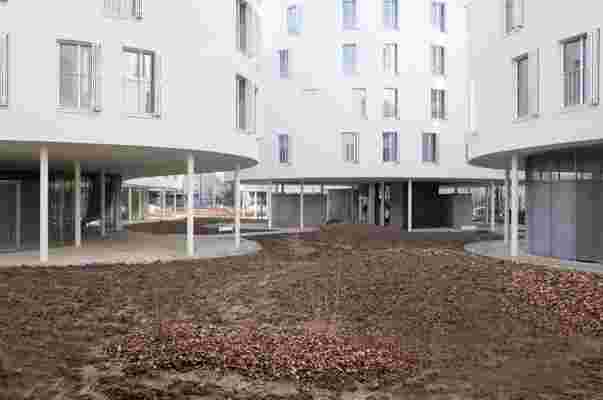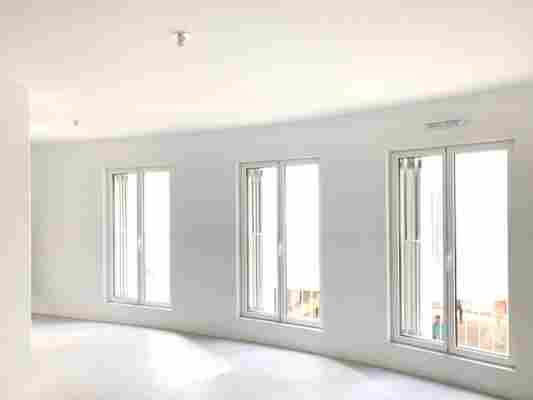From the Rolex Learning Center in Switzerland to the New Museum in New York to their 2009 Serpentine Pavilion, architects Kazuyo Sejima and Ryue Nishizawa of SANAA are known for their restrained, almost ethereal structures that compliment and interact with their surroundings. And this social housing project by the 2010 Pritzker Prize winners is no exception.
Located in Paris’s 16th arrondissement, the Maréchal Fayolle Housing Complex is a far cry from traditional public housing. The complex is made up of four irregularly shaped towers, which contain anywhere from 8 to 48 apartments. The five-story buildings fit with the surroundings and do not tower over the adjacent neighborhood.

Below the buildings there is ample room for storage and well-lit, walkable space.
Clad in cream stucco, the upper stories of the buildings sit on stilts atop lobbies with smaller footprints, which contain bike and stroller storage and trash rooms. The ground floor entrance halls feature minimalist concrete and expanded metal mesh and are light-filled, thanks to the stilt design. The buildings’ windows are scattered on the façade, adding a contemporary twist to the streamlined exteriors. The complex’s 100 apartments are outfitted with durable linoleum floors and slightly curved walls. Floor plans range from studios to four bedroom apartments, offering homes that will work for young professionals and families alike.

SANAA’s design allows for ample sunlight to fill the interiors.
SANAA collaborated with Michel Lévi and Antoine Saubot of local firm Extra Muros on the architecture and landscape design. The project was designed for Paris Habitat, a public utility company that manages 124,000 social housing units in and around Paris. Like many cities, Paris has a shortage of affordable housing. By law 25% of housing in Paris must be social housing by 2025, and mayor Anne Hidalgo has announced that the city will increase that number to 30% by 2030.
